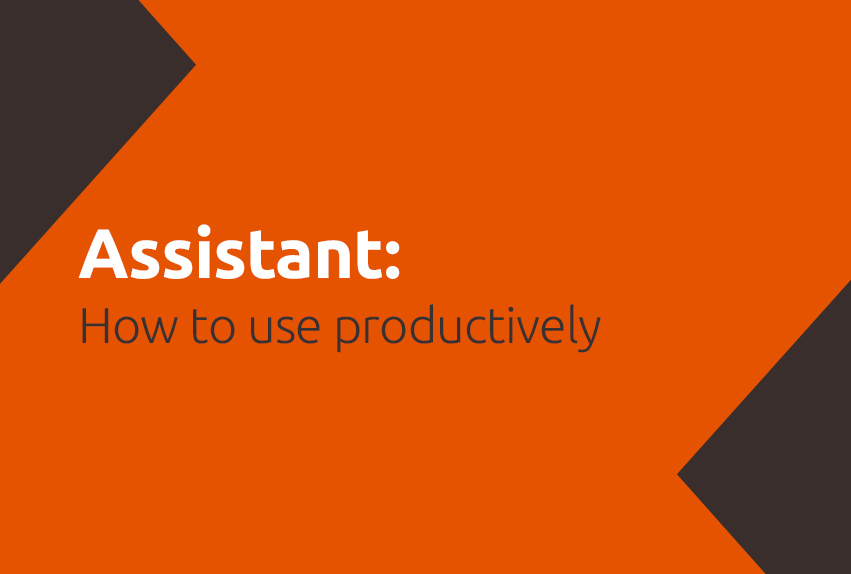Assistant: How to use productively
How can you make the best of your assistant’s time? How can you help them function as productively as possible, without taking too much time out of your day?
Every relationship between a manager and their assistant will be unique, with the factors of history
together, experience, work style preferences and personalities on both sides affecting the dynamic.
Following are some basic principles, though, which may assist in assessing improvement
opportunities.
The number one factor in productively working with anyone, and especially with an assistant, is that
the “transom” between you is tightly defined and maintained. No matter how good and trusted
your assistant may be, it needs to be very clear whether you or he/she has the next action on
something—who has the ball. One of the greatest sources of frustration is the lack of pristine clarity
about whether the assistant is supposed to be taking the next action on arranging the next trip or
the boss. So the rigor of maintaining our self-management process becomes extra critical when
there are others closely dependent on the communications and the hand-offs. “But I thought you
were going to…!” is too often the result at the back end, because the delegation or communication
was not clear. Make sure that any communication about any situation or possible project or task is
ended with a very specific question: “so, what’s the next step on this, and who has it?”
That situation is more easily managed when the communications are in paper or email instead of
face to face. The repository of in-trays or inboxes can be a nightmare if they’re not controlled. But,
if they are being worked appropriately, it allows communications to be made without the presence
of the other person, in our own timing, and there is a physical or digital object that can now serve
as a trigger or reminder of the actions required. Dictating something into a digital tool or voicemail
(if that’s still used) can also work, if that’s a convenient modality. You want to be able to offload
information, ask a question, or hand off projects and tasks as soon as they occur to you. So the
more “virtual” the tools and the habits are, the more productive both people will be.
This also helps improve a major glitch in office productivity—the boss randomly interrupting the
assistant as soon there’s a need or thought. It takes more than twice as long to finish some task if
we get consistently interrupted, and the psychic scatter and static that likely ensues is dangerous.
Interruptions of a staff person should be saved for the exceptions where immediate communication
is really required. They’ll get tons more done in much less time. If a face-to-face interaction is
required, save it up in an “agenda” folder or list for the once-a-day or once-a-week meeting together
that is needed to keep the relationship clear, handle sensitive or subtle details, and regroup for the
bigger picture view.
One detail that I often coach managers on is to stop having their assistants sort incoming mail and
phone calls, except for the simple “signature required” kind of category. What winds up happening
in a meager attempt at productivity is that the assistant has to review, assess and attempt an
David Allen
Quer explorar mais conteúdos sobre o método GTD® e sobre o autor David Allen? Confira alguns artigos exclusivos em nosso blog e acesse www.calldaniel.com.br para conhecer nossos treinamentos!


